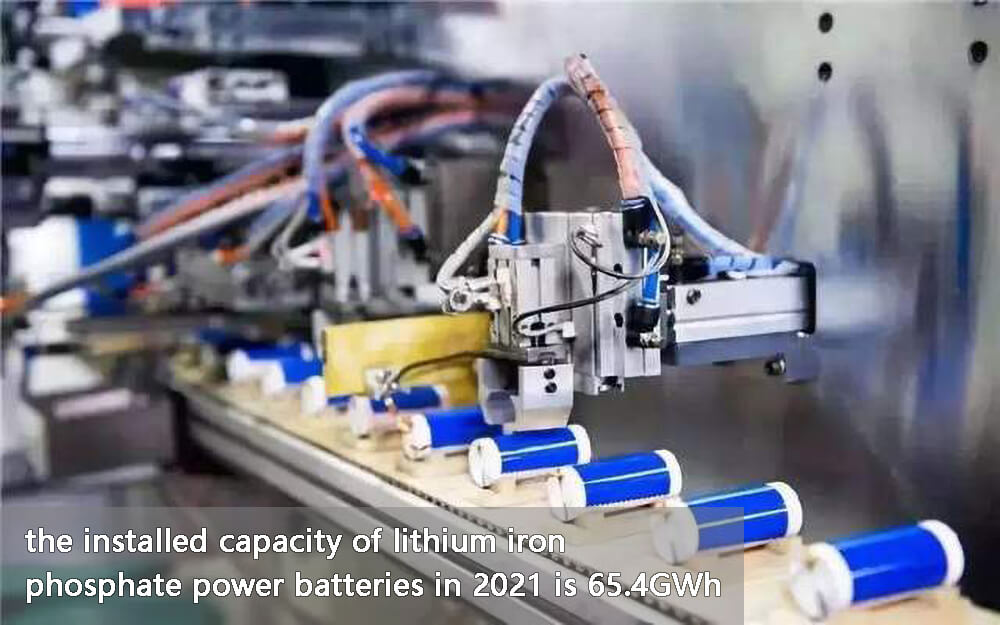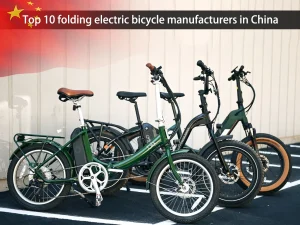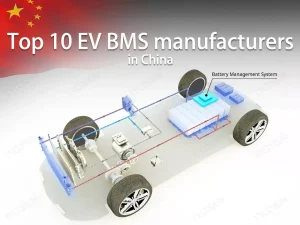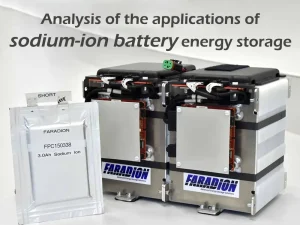Home » battery news » The good trend of CTP highly integrated power battery in 2022
The good trend of CTP highly integrated power battery in 2022
More than two years after its inception, the power battery CTP technology has been applied on a large scale. Before that we may need to know about Top 10 power battery companies.

Power battery CTP technology
CTP highly integrated power battery (Cell To Pack), which integrates the cells directly into the battery pack. Since the module assembly process is omitted, the space utilization rate of CTP battery packs is improved, the weight of battery packs is reduced, the energy density is improved, and the cost is reduced, which is also an important direction for exploring structural innovation of power batteries.
The first to act is CATL. In September 2019, the world’s first CTP battery pack rolled off the production line and was installed on the BAIC EU5 model. Compared with the traditional battery pack, the volume utilization rate of the CTP battery pack is increased by 15%-20%, the number of battery pack components is reduced by 40%, the production efficiency is increased by 50%, and the energy density can reach more than 200Wh/kg.
BYD followed, releasing its innovative technology blade battery in March 2020. In simple terms, the width of the cell is infinitely elongated and the thickness is made thinner to achieve an ultra-long cell of 900mm or even 1m faster. Compared with the traditional square battery, it has a “flat” and “long” shape.
With the vigorous promotion of the two major power batteries, CTP technology has undergone a small-scale test in 2020, and by 2021, it has been maturely applied in a number of popular new energy passenger vehicles, achieving large-scale production. In this context, in 2022, the first year of large-scale application of CTP batteries will be opened.
On the one hand, since 2021, CATL CTP battery packs have been introduced on a large scale in Tesla Model 3, Model Y, Xiaopeng P7, NIO ES6 and other cost-effective models. It was previously announced that the NIO ET7 equipped with CTP batteries will also be delivered at the end of this month.
A set of data for reference is that in 2021, more than 910,000 Model 3 and Model Y vehicles will be delivered globally, of which the Shanghai factory will deliver more than 410,000 vehicles. The domestic Model 3 equipped with CATL’s CTP battery pack accounts for more than 80%, and its penetration in the Model Y field is accelerated.
On the other hand, BYD also clearly announced that all its models are equipped with blade batteries. In 2021, BYD will sell nearly 600,000 passenger cars. In 2022, it plans to launch no less than 20 new models, including DMi versions of popular models such as Han DM-i, Qin Plus DM-i, and Song MAX DM-i.
At the same time, the short-knife battery launched by Honeycomb Energy will also be supported in the form of CTP, and it has been confirmed to be installed on the ORA model.
In addition to square CTP batteries, soft pack battery companies including Gateway Power Vision Power are also actively exploring CTP solutions. Among them, the building block battery technology launched by Gateway Power based on the concept of soft package large module has matured, and the sample is sent to international car companies, and China’s large-scale promotion is imminent. The battery capacity of the Envision Power Soft Pack CTP will be doubled in the same space, and the battery life will be extended to 1000km. It is expected to be mass-produced in 2024.
The logic behind the popularity of popular models is that through structural innovation, the space utilization rate of CTP battery packs has been improved, the weight of battery packs has been reduced, energy density has been improved, and costs have been reduced.
More importantly, the combination of CTP technology and LFP battery achieves the optimal solution of cost, safety and energy density, and the product is continuously verified and promoted in a variety of popular models.
Since 2021, the price of raw materials has risen, and the cost pressure of battery companies has been huge, and the introduction of LFP batteries has been accelerated. Ningde era CTP technology and BYD blade battery both use LFP to achieve a balance of cost, safety and energy density. The large-scale production of popular models such as Model 3 and Han EV will further promote the large-scale production and application of CTP battery packs.
In this context, Chinese battery companies have moved from leading the development of global CTP technology to the global export of CTP technology. In 2021, CATL signed a strategic agreement with Hyundai Mobis to authorize the latter to use its CTP technology and support the latter’s supply of CTP-related battery products in South Korea and around the world.
CTP welcomes the first year of large-scale application
It has been successfully verified and applied on a large scale in popular models such as Model 3, Model Y, and Han EV. The CTP+LFP battery pack achieves a balance of cost, safety and energy density. Large-scale promotion has laid a market opportunity.
Since 2020, the penetration rate and acceptance of LFP batteries in the passenger vehicle field have continued to rise. Large-scale introduction and application of phenomenal models such as Model Y, Model 3, BYD Han EV and Hongguang Mini EV, at the same time, it has been favored by a number of international OEMs such as Mercedes-Benz, Volkswagen, Renault, and Hyundai, and has become an important choice for its entry-level electric vehicle battery.
According to the data, the installed capacity of lithium iron phosphate power batteries in 2021 is 65.4GWh, a year-on-year increase of 204%. The growth rate is much higher than that of ternary power batteries, which is 87%, and accounts for nearly 47%. In 2022, it will compete with ternary batteries. Here you can refer to TOP 10 Lithium Iron Phosphate Power Battery Manufacturers.
Ningde era CTP technology has locked LFP battery at the beginning, and then accelerated the promotion in the ternary field, which has now penetrated in the field of passenger cars and commercial vehicles; BYD’s blade battery has announced that it will fully switch to LFP batteries, and its models will be fully bladed.
Leveraging on LFP batteries, the CTP technology of the two major battery players, CATL and BYD, has penetrated 40% of the top 10 new energy sales in 2021.
The four models of Model Y, Model 3, Qin Plus, and Han EV that use CTP technology will be ranked second, third, fifth, and sixth in the sales ranking of new energy vehicles in 2021.
Among them, two Tesla models drive nearly 20GWh of installed capacity, of which Ningde era CTP batteries account for nearly 70%, and BYD is equipped with its blade batteries.
In addition to Tesla, CATL CTP is also equipped with NIO ES6, Xpeng G3, Xpeng P7, and will also provide NIO ET7, Roewe RES33 and Nezha for many new models that will be launched this year or in the future.
The DMI series of BYD’s popular models have also been launched one after another. It plans to launch no less than 20 new models in 2022, including the DMi versions of popular models such as the Han DM-i, Qin Plus DM-i, and Song MAX DM-i, with sales in 2022. Challenge 1.5 million vehicles.
New battery supply landscape and supply chain opportunities
At the same time as the large-scale application of CTP battery packs, the new supply pattern of battery companies and OEMs is accelerating.
After the battery pack CTP, the overall production and manufacturing process will undergo significant innovation. The main engine factory will switch from purchasing cells and modules from the original way of assembling battery packs to purchasing battery packs from battery companies as a whole.
In particular, battery companies continue to promote the layout of the entire industry chain of integrated battery packs and integrated chassis. Integration and structural innovation have effectively enhanced the power of battery factories in the parts supply chain.
On the one hand, the overall development and application of CTP/CTC technology innovation battery companies is earlier than that of OEM companies, and the implementation of CTP technology is obviously ahead. On the other hand, with the battery as the core, supplemented by the integrated design of the corresponding components, the battery factory has more development advantages.
It is worth mentioning that in the manufacturing process, compared with the traditional battery pack, the CTP battery pack removes the module, and in the process of simplifying the PACK structure, the increase or decrease in the use of different structures and materials, as well as the traditional structural parts, are in the production supply. There will also be major changes in the structure.
On the one hand, the use of some new material parts, such as thermal adhesive, structural adhesive and insulating parts; on the other hand, the industrial structure of traditional structural parts has migrated, and the customer structure has gradually penetrated from the previous automobile companies to battery companies.
In the field of structural parts, CTP technology puts forward higher requirements for shock resistance, air tightness, and lightweight of battery trays. Based on this, the materials used are also constantly evolving, and the application of new materials such as steel → aluminum alloy → magnesium aluminum alloy / plastic and carbon fiber composite materials is explored.
In the field of material parts, the CTP structure battery pack design eliminates or greatly eliminates the intermediate module components, and uses a large amount of glue to connect and fix the battery cells, so the application of structural glue and thermal conductive glue increases.
Based on this, the modularization and standardization of battery packs will continue to deepen, and the concentration of the entire battery pack production process will continue to increase.
Especially in the CTC era, the production of battery packs will shift from decentralized OEMs to more concentrated battery factories, and provide new market opportunities in the field of structural parts and materials.




























